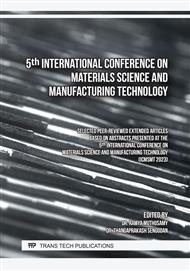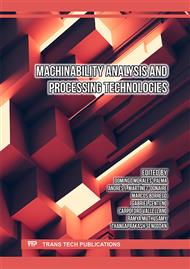p.129
p.139
p.149
p.161
p.171
p.185
p.197
p.207
p.221
Study on the Manufacturing of Composite Materials Made from Glass Fiber Reinforced Polymer (GFRP) in Indonesia for Use as Lining in Open Channels
Abstract:
This study explained the potential use of glass fiber-reinforced polymer (GFRP) composite materials as an alternative lined material for irrigation channels in Indonesia. Currently, only four recommended materials are used as lining in irrigation channels in Indonesia, i.e., stone masonry, concrete, soil-cement, and ferrocement. Almost all lined material's main constituents are sourced from nature/environment. The exploitation of these mined materials will impact environmental destruction. This study focused on the manufacturing process of GFRP material, GFRP surface roughness testing, and the water flow characteristics in the hydraulic model experimental testing. The manufacturing process of GFRP material used polyester resin as the polymer matrix, E-glass type with a combination of woven roving mat covered by non-woven standard mat as the glass fiber reinforcement, and manufacturing process with a combination of hand lay-up and spray-up techniques. The GFRP material product has an average surface roughness coefficient value of Ra around 5.19 to 5.97 μm. The GFRP manufacturing has a good uniform product, as the average surface roughness coefficients of GFRP material have relatively the same values. It is shown that a factory in Indonesia has sufficient capacity to manufacture GFRP material for lining in open channels. The water flow characteristics in the flume were turbulent during testing in the hydraulic laboratory. The experimental study concluded that the GFRP composite materials could be implemented as preliminary references for alternative lined material in irrigation channels in Indonesia.
Info:
Periodical:
Pages:
207-219
Citation:
Online since:
October 2023
Price:
Сopyright:
© 2023 Trans Tech Publications Ltd. All Rights Reserved
Share:
Citation:



